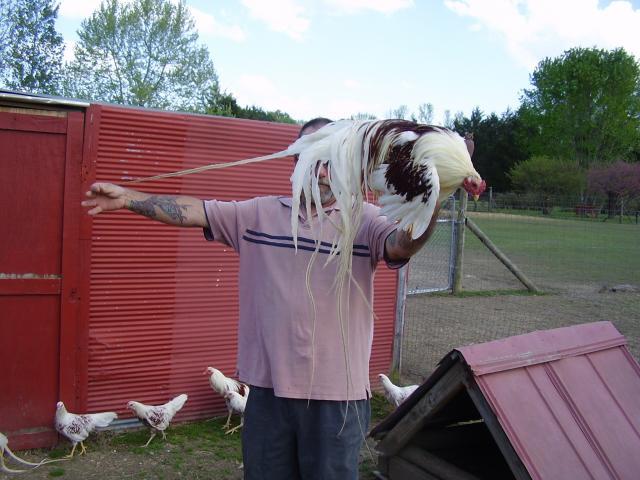haha,
Yep, mine are the bantam phoenix, and also have bantam blue and black sumatras.
All my phoenix are out of Toni-maries lines one way or another, and yes I did just order 2 pr of birds from Cy, but will be keeping any and all offspring from them this coming year for sure to work those into my other lines. I also have quite a few other colors in bantam phoenix and am still working on my collection of them.
If yokos came in bantam, I would have them for sure, but I only work in bantam birds.
Colors I have right now, some very limited still are
white, silver dw, bb red, lavender, lavender barred, khaki silver, black, solid dun, and am trying to get in some blued versions as well.
Will be working heavily over the coming years on these to get many more colors as well.
Next spring will mainly have silver duckwing and whites for sale. Will be keeping back most of the others til I have enough for myself to work comfortably with.
Yep, mine are the bantam phoenix, and also have bantam blue and black sumatras.
All my phoenix are out of Toni-maries lines one way or another, and yes I did just order 2 pr of birds from Cy, but will be keeping any and all offspring from them this coming year for sure to work those into my other lines. I also have quite a few other colors in bantam phoenix and am still working on my collection of them.
If yokos came in bantam, I would have them for sure, but I only work in bantam birds.
Colors I have right now, some very limited still are
white, silver dw, bb red, lavender, lavender barred, khaki silver, black, solid dun, and am trying to get in some blued versions as well.
Will be working heavily over the coming years on these to get many more colors as well.
Next spring will mainly have silver duckwing and whites for sale. Will be keeping back most of the others til I have enough for myself to work comfortably with.
Last edited:


